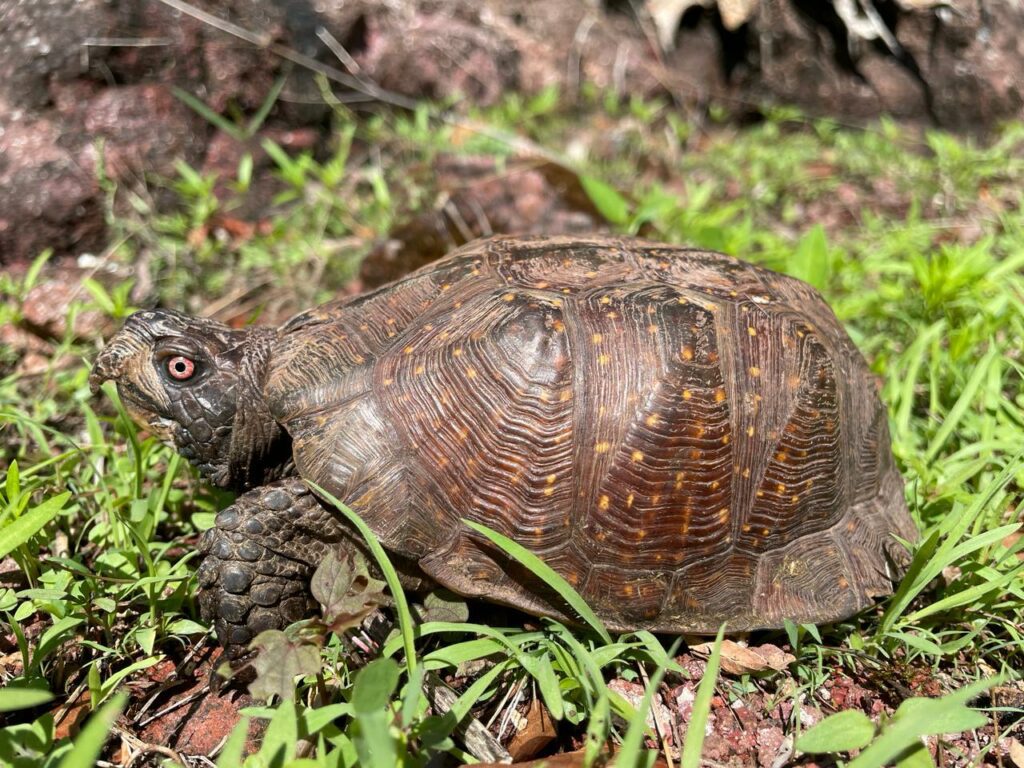Hailing from Mexico, this speckled turtle is one of the many species that make up this turtle-rich country.
The Spotted Box Turtle (Terrapene nelsoni) has a brown carapace spattered with creamy yellow spots, and like all box turtles, it has the ability to close up its shell entirely, thanks to the hinge on its plastron. Males commonly develop large bulbous heads and pronounced beaks, which they use for fighting over burrows, females, and territory.

To support this area of the world in dire need of conservation interventions, we work with Mexican nonprofits, such as Estudiantes Conservando la Naturaleza, or Students Conserving Nature (SCN), universities, and individuals to evaluate and monitor populations, perform ecological field studies, and initiate conservation actions for imperiled and understudied species, like the Spotted Box Turtle.
The data to support the current conservation status of the Spotted Box Turtle lends itself to the species’ status as Data Deficient, but thanks to recent involvement and discussion at the IUCN Red List workshop held in Mexico City in July 2023, numerous species will likely see their endangerment status uplisted to a greater threat level in 2024.
**The Spotted Box Turtle, like most species of turtle and tortoise in Mexico, is protected from commercial collection and trade.**
- Pictured: Spotted Box Turtle (Terrapene nelsoni)
- Countries of Origin: Mexico
- Habitat: Oak savannas, tropical dry forests, and montane pine-oak forests
- Wild Population: Unknown – one of North America’s most understudied chelonians
- IUCN Red List Status: Data Deficient
- Threats: Habitat destruction; illegal collection for the pet trade; prolonged drought
All photos courtesy of Taggert Butterfield.
